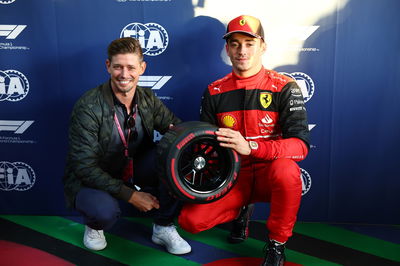Michelin: Tyres not flawed, just unsuitable.
Michelin has revealed that there was no specific manufacturing problem with the various batches of tyres it took to Indianapolis for the controversial United States Grand Prix, but admitted that the compounds on hand were simply not suitable for the circuit.
The French company has issued an official statement to reveal the findings of its investigation into the situation that saw seven teams pull out of the race at the end of the formation lap, citing several reasons for the embarrassing withdrawal but insisting that it had no option but to stick to its principals over safety.
Michelin has revealed that there was no specific manufacturing problem with the various batches of tyres it took to Indianapolis for the controversial United States Grand Prix, but admitted that the compounds on hand were simply not suitable for the circuit.
The French company has issued an official statement to reveal the findings of its investigation into the situation that saw seven teams pull out of the race at the end of the formation lap, citing several reasons for the embarrassing withdrawal but insisting that it had no option but to stick to its principals over safety.
"The problem was that we under-evaluated the extreme constraints to which tyres were exposed through turn 13 in the specific context of 2005," competition director Pierre Dupasquier confessed, "We are grateful to our partners for their work with us right up to the last moment to seek a solution that would have permitted the race to go
ahead in total safety. We regret that the spectators did not see an exciting race, [but], in keeping with its principles, Michelin did not sacrifice safety for performance."
The full statement pointed, not only to the under-estimation of conditions at Indianapolis, but also to a lack of testing at the US circuit, which has never been possible in the six years that the USGP has run there, but was exacerbated by a resurfacing programme carried out ahead of the Indianapolis 500 in May.
"The tyres were not intrinsically flawed, but were insufficiently suited to the extreme racing conditions encountered through turn 13 this year," the statement confirmed, "Given the evolutions concerning the cars' aerodynamics, the regulations which govern the sport and the nature of track surfaces, etc, Michelin carries out testing in the course of each season with a view to developing the tyres which are the most suited to each event. Two key elements must be known about the Indianapolis circuit - turn 13, with its severe banking, is the only turn of its kind in a season of 19 races, and testing at Indianapolis was not possible.
"As a consequence, in order to define the specification of its tyres for Indianapolis, Michelin had to carry out simulation work based on the results of less severe testing at other venues and on estimations concerning the specific conditions likely to be met at Indianapolis in 2005. The Michelin investigations have revealed that the loads exerted on the rear left tyre through turn 13 at Indianapolis were far superior to the highest estimations of Michelin's engineers. This year, the situation through this corner turned out to be altered by the extreme combination of the speed, lateral acceleration and additional dynamic load. The tyres which Michelin took were therefore insufficiently adapted to the extreme conditions of turn 13 in 2005. This was a problem."
The statement also claims that the installation of a temporary chicane ahead of turn 13 would have been sufficient for the race to proceed with all 20 cars taking the start. The FIA and race stewards declined the proposal, leading to the withdrawal of all 14 Michelin runners.
'Investigations concerning the materials and construction employed for the tyres produced for Indianapolis have confirmed the absence of any anomaly," the statement continued, "The tyres did not have an intrinsic flaw, but they were not insufficiently suited to turn 13. Moreover, this analysis confirmed the pertinence of the tyre solutions specified for all the other circuits. In retrospect, this analysis perfectly validates the pertinence of the precautionary measures requested by Michelin and its partner teams in the interests of driver safety and fully confirms that the addition of a chicane at the entrance of turn 13, which would have guaranteed lower speeds through turn 13, would have enabled spectators not to be deprived of a high class competition, while at the same time guaranteeing the safety of the drivers."
Based on its investigations, Michelin says that it has revised its simulation model for banked corners, such as turn 13 at Indianapolis,, but has asked that testing at the Brickyard be made possible in order to prevent a repeat of the situation encountered in 2005.
The company also made a point of stating that it will be present with safe, competitive tyres at the forthcoming grands prix, beginning with this weekend's French round - despite Dupasquier admitting that certain corners at Magny-Cours provided unique conditions for the choice of compound.
"The track surface at Magny-Cours tends to be more abrasive than many on which we race during the course of the season," he revealed, "The layout might be fairly conventional, but the ultra-quick right-hander at Estoril and the Adelaide hairpin provide a couple of significant talking points.
"For a tyre manufacturer, the biggest challenge is to produce a compound capable of coping with the high loads generated through Estoril. It might only account for five per cent of the lap, but it dictates our range of options for the weekend. If it wasn't there, we would be able to run softer tyres."










